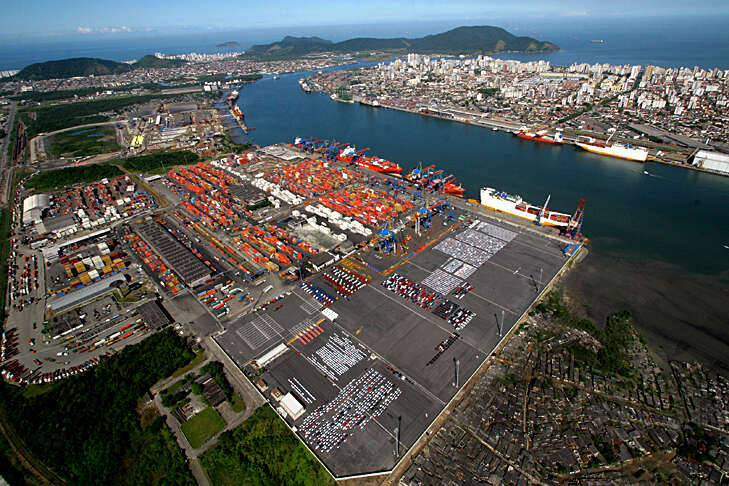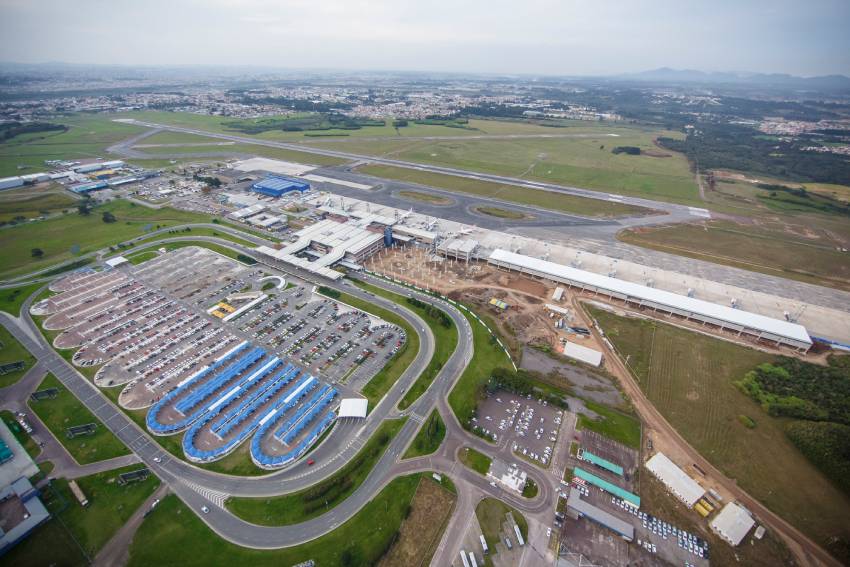Export to Brazil
Brazil is the largest and most populous country in Latin America, the largest economy in Mercosur and the 12th largest in the world. The country has expanded its range of trading partners, the first being China, followed by the European Union and, in third place, the United States, both in terms of exports and imports. Although it has not yet been ratified, the EU has an association agreement with the four founding countries of Mercosur (Argentina, Brazil, Paraguay and Uruguay) that will enable it to eliminate a large part of the tariffs.
The Federal Republic of Brazil, with an area of 8.5 million square kilometers, is the fifth largest country in the world, behind the Russian Federation, Canada, China and the United States. This, together with its population of some 213 million inhabitants, makes Brazil the largest country in Latin America and also one of the world’s most important economies, the twelfth (in 2020).
Brazil is also part of the group of countries known as BRICS: Brazil, Russia, India, China and South Africa, which in 2014 created their own development bank, the New Development Bank (NDB).
Brazil economic data
According to the International Monetary Fund, Brazil’s GDP evolution oscillated from a positive +1.4% in 2019 to a negative -4.1% in 2020, essentially due to the effects of the global pandemic, although by the close of 2021, this agency points out that Brazil’s GDP will grow by +5.2% and +1.5% in 2022.
In relation to GDP, in 2020, this indicator reached US$ 1,438,444 million and per capita income was US$ 14,560. As regards the World Economic Forum’s Global Competitiveness Index, which measures how a country uses its resources and its ability to provide its inhabitants with a high level of prosperity, in 2019 Brazil ranked 71st in the ranking, which is made up of 141 countries.
Another economic data is provided by the World Bank’s Doing business 2020, which indicates that Brazil ranked 124th out of 190 in terms of the ease of doing business.
Brazil has been a member of the World Trade Organization since 1995 and was one of the 23 founding members of the General Agreement on Tariffs and Trade (GATT) in 1947. It is also part of the Mercosur (Southern Common Market) trade bloc and is an associate country of the Andean Community, which fosters the customs union and promotes the region’s development through integration and economic and social cooperation. Brazil is also a key partner of the Organization for Economic Cooperation and Development (OECD).
Brazil’s trading partners

According to ICEX, in recent years, Brazil has opted to diversify the range of its trading partners, opening up to countries such as China, India and others in the Middle East and Asia, thereby relegating its traditional markets such as the United States to a second position.
This trade policy has meant that, in 2020, the main recipient country for Brazilian exports was China (32.3% of the total), followed by the European Union (13.5%), the United States (10.2%), Argentina (4%), Canada and Japan (2%), and Chile and Mexico (1.8%).
As for Brazil’s imports, these come mainly from: China (21.4%), EU (16.9%), USA (15.2%), Argentina (4.9%), South Korea (2.6%), India (2.5%) and Japan (2.3%).
Within the European Union, Brazil’s exports, which amounted to MUSD 28,343 in 2020, go mainly to: Netherlands (3.5% of the total), Germany (2%) and Spain (1.9%); while Brazil imports essentially from Germany (5.4% of the total), Italy (2.2%), France (2%) and Spain (1.6%) and, in 2020, these imports totaled 26,818 MUSD.
It should be noted that trade relations between the European Union and Brazil are underpinned by the 1995 EEC-Brazil Framework Agreement on Trade and Economic Cooperation, which, although a non-preferential agreement, grants both markets most favored nation (MFN) treatment.
Also, in June 2019, the European Union reached a political agreement on the new trade framework that will be part of the Association Agreement between the EU and the four founding members of Mercosur (Argentina, Brazil, Paraguay and Uruguay). This free trade agreement will eliminate 91% of the tariffs applied to European exports, while the EU will liberalize 92% of its imports, 66% of which are already liberalized. However, this agreement has yet to be ratified, as some European governments, such as Austria, the Netherlands, Belgium, Ireland and France, are reluctant to sign it unless there are verifiable guarantees regarding the fight against climate change and deforestation in the Amazon, as well as the defense and conservation of biodiversity and respect for sanitary and phytosanitary standards.
As for trade between Brazil and Spain, Spanish exports to the South American country reached €2,257 M, registering a slight decrease compared to €2,590 M in 2019. Spanish imports from Brazil also experienced a decrease and went from €3,821 M in 2019 to €3,515 M in 2020. Based on these figures, Spain is Brazil’s ninth largest trading partner in terms of exports from the South American country and the fourteenth largest in terms of Spanish exports.
The figures are also significant in terms of investment. Spain is the second largest foreign investor in the Latin American country, and Brazil is Spain’s fourth largest foreign investment destination. Brazil’s investment flow to Spain is still small, occupying the eighteenth position among investor countries, but still has great potential for growth.
What products does Brazil export?
Brazil is the world’s largest exporter of soybeans and their derivatives (14% of total exports), followed by iron ores and their concentrates (another 14%) and crude petroleum oils (12%).
What products does Brazil import?
As for imports, Brazil buys abroad, essentially products of the processing industries (93% of all imports in 2020), followed by products of the extractive industry (4% of the total) and agricultural products (2.5%). By products, the most imported are machinery, apparatus and electrical equipment (13%), nuclear reactors and boilers (12%), mineral fuels, petroleum or bituminous oils (9%), chemical products (7%), fertilizers (5%) and parts and pieces for automobiles and tractors (5%).
Brazil can be an opportunity to export goods such as agri-food products, especially quality products, such as olive oil or wine, as well as fruits and vegetables. Other products such as ham, sausages and cheeses are also growing, albeit slowly because they are still subject to a lot of bureaucracy and non-tariff barriers.
Brazil is also a major consumer of machinery, tools and capital goods with a high technological content that domestic production cannot meet, which is why there are tax benefits for the import of these products.
Other sectors that present export opportunities to Brazil are automotive and especially since 2018 when the Rota 2030 Program – Mobility and Logistics was approved́, which offers tax benefits for companies in the automotive sector with investment in R&D as a counterpart. Also the agricultural sector (machinery, irrigation systems and fertilizers) presents opportunities because Brazil does not have enough availability.
Finally, Brazil is boosting certain transportation, water and energy infrastructures, which require materials and equipment. The environment and smart cities also present opportunities, as the country is betting on renewable energies and efficient management of cities, waste and recycling.
Things to consider when exporting to Brazil
The consumption potential of the Brazilian population, together with the fact that it is a country that is economically at the head of Mercosur and its needs for products and goods, make it an attractive country to export to. Although the procedures are not complex, it is important to keep in mind that the opening of the country to imports did not occur until the 1990s.
In Brazil there is the Integrated Foreign Trade System (Siscomex), a portal that allows processing the procedures of a commercial operation (registration, follow-up and control) and also interrelates the public administration with the private operators involved in an export or import.
Brazilian Customs is under the authority of Receita Federal of Brazil, which applies Brazil’s Customs Regulations and, upon entry of goods from abroad, can apply four verification channels prior to release: green channel (no documentary or physical verification), yellow channel (documentary verification), red channel (documentary and physical verification) and gray channel (documentary and physical verification due to suspicion of fraud in the declared values).
Brazil moves approximately 90% of its foreign trade (imports and exports) by sea and has more than 40 commercial ports, the most important in terms of container traffic being those of: Santos, Portonave, Paranaguá, Rio Grande, Embraport, Itapoá, Suape, Salvador, Rio de Janeiro, Itaguaí, Vitoria, Recife, Porto Alegre, Itajai, Imbituba, Manaus, Fortaleza, Navegantes, Belém and Curitiba.
In terms of air transportation, Brazil has numerous airports, although the ten most important in air cargo handling are: Manaus, Curitiba, Recife, Navegantes, Goiânia, Vitória, São José dos Campos, Londrina, Joinville and Foz do Iguaçu. It is through these infrastructures that high-value Brazilian imports enter, such as electronic and computer equipment, chemical and pharmaceutical products, or accessories for the automotive sector.







